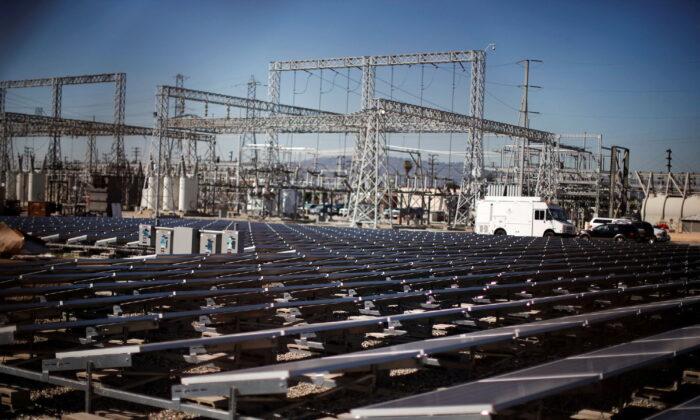I wrote Orange County Register editorials for the 2003 recall of then-governor Gray Davis and his replacement with then-governor Arnold Schwarzenegger. We supported the recall. But at that time, the paper’s commentary section didn’t support specific candidates for office, although it does now.
Things today are a lot different. With the recall of Gov. Gavin Newsom scheduled for Sept. 14, I’ll lay out some contrasts between the current recall and the Oct. 7, 2003, ousting of Davis.
When Schwarzenegger took office, it had been four years since a Republican led the state. It’s now been 10 years since California has had a Republican governor.
At the time of the 2003 recall, 43.7 percent of voters were registered Democrats, compared with today’s 46.2 percent. Conversely, the number of registered Republicans has dropped from 35.3 percent in 2003 to 24.1 percent today. The number of independent voters has increased from 16 percent to 23.7 percent.
Of California’s 21.8 million eligible voters in 2003, 15.4 million, or 70.5 percent, were registered. Of today’s 25.2 million eligible voters, 22.2 million, or 88 percent, are registered.
The state’s population has grown from 35.2 million in 2003 to 39.7 million today.
It appears that Californians have gotten wealthier between the two recalls, with 9.3 percent belonging to the top marginal individual income tax rate in 2003, compared with 13.3 percent now.
Support for Recall
Six weeks before the Aug. 24, 2003 vote, 50 percent of people supported the recall, while 45 percent opposed it. On May 26, 2021—3 1/2 months before the election—40 percent of people supported the recall, and 57 percent opposed it.Approval rating for Davis ahead of the recall was 24 percent; 72 disapproved of his leadership. Conversely, Newsom has a 52 percent approval rating, with 43 percent of voters unhappy with the way he governs California.
Media Shapeshifters
Social media didn’t exist in 2003.Newspapers at the time of Davis’s recall remained dominant, still three ways away from a sharp circulation decline. They’re now less influential than online and social media sources, but hanging in there.
The broadcast media’s coverage of state issues was sporadic in 2003, including for the recall, although Schwarzenegger’s star power generated interest.
Chinese Communist Party’s Influence
The Chinese Communist Party’s (CCP’s) influence on media was negligible in 2003, when media was still diffused and locally owned.“Meanwhile, journalists, news consumers, and advertisers in countries ranging from Sweden to Russia, South Africa, the United States, and Australia are encountering intimidation or censorship of political content that the CCP considers undesirable. Beijing’s media influence not only distorts the information environment in the affected settings, it also undermines international norms and fundamental features of democratic governance, including transparency, the rule of law, and fair competition.”
Would the CCP care about a state recall campaign? Well, almost by definition, any California governor or senator is considered a future presidential candidate. Two recent presidents and the current vice president hail from the Golden State. And look at the back of your iPhone. It reads: “Designed by Apple in California. Assembled in China.”
Does that have anything to do with Trump’s confrontations with China? Inquiring minds want to know.
Track Record
During the 2002 general election, Davis received 47.3 percent of the vote; Republican Bill Simon received 42.4 percent. Newsom received 61.9 percent of the vote during the 2018 election, a healthy lead against Republican John Cox, who received 38.1 percent of the vote.The economy in 2003 was already recovering strongly from the dot-com recession. But it was also entering the real estate boom cycle that in 2007 crashed into the much worse subprime recession.
State Finances
California had a $35 billion deficit in 2003 under Davis.By sharp contrast, Newsom claimed a $75.7 billion surplus in May.
Major Crises
Davis had mismanaged the 2000–01 California Electricity Crisis in 2003. The dot-com bust destroyed Silicon Valley evaluations, slamming revenues to the state. Davis met the budget crisis with a unilateral increase in the car tax that many said was unconstitutional.Number of Candidates
There were 154 candidates in 2003. About 60 candidates have filed a statement of intention to run during the 2021 election, according to the latest tally by the Secretary of State. The deadline to file is July.End Result of Recall
In 2003, Schwarzenegger’s star power fueled both the recall and his own election against the lackluster Davis. In his first two years of decent governance, Arnold fulfilled campaign promises to cut taxes and “blow up the boxes” of government waste.When the recession hit in 2007, the excessive spending created deficits of more than $20 billion. In 2009, he signed a record tax increase of $13 billion. He left office in 2011 with the high hopes and reform promises of his 2003 election “terminated.”
2021: To be determined.





